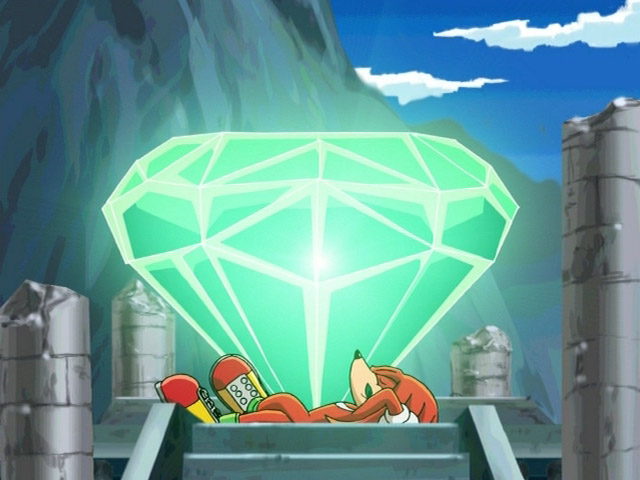You are using an out of date browser. It may not display this or other websites correctly.
You should upgrade or use an alternative browser.
You should upgrade or use an alternative browser.
Rich people are now buying huge crystals as the new status symbol.
- Thread starter Sad Bunny
- Start date
More options
Who Replied?humminbird
Veteran
So basically the rich have got richer because of the pandemic
when rich person can have table that cost more than your sclass mercedes, now you finally realize you were broke and its levels to this and the wealth gap is real and designed to a bunch of fukking thieves who need to be stopped
when rich person can have table that cost more than your sclass mercedes, now you finally realize you were broke and its levels to this and the wealth gap is real and designed to a bunch of fukking thieves who need to be stopped
HollywoodP
#LongLive24 #TMC, Lakeshow, ASU, Fukk Jerry Jones
this aint new. White folks been buying big ass gems for a hot min.
So rich they running out of shyt to spend money on...
At least these crystals got lasting power, I’m not entirely mad at it
How ‘Healing’ Crystals Are Painful to Mine
BOEKENHOUTHOEK, South Africa—Crouched in the mouth of a hand-dug tunnel here, Linki Mugidi chisels the walls in search of a crystal used by Western wellness practitioners and of the sort promoted by celebrities who say they believe quartz has special healing properties.
The 50-year-old mother of two is one of hundreds of opportunists drawn to dig in backyards and on hillsides for cactus quartz, the rare type of crystal found in this dusty village about 90 miles from Johannesburg, South Africa’s economic capital.
“It’s hard work, back breaking. My back, hands and shoulders are always in pain by the end of the day,” says Mugidi dressed in a sun hat, rubber Mary Janes and pink socks.
In recent years, endorsements from celebrities like Gwyneth Paltrow, Kim Kardashian and Adele have helped turn crystal quartz from a New Age fad into a growing slice of the booming wellness industry.
That has set off a rush to find quartz, one of the most common minerals on Earth, but one for which scientists say there is no evidence for healing or other powers.
“Right now the global crystal market is kind of like the Wild West,” says Cristina Villegas, director of sustainable markets at Pact, a Washington, D.C., nonprofit. “The serious risks can range from tunnel collapse, sudden flooding, free fall or asphyxia due to lack of ventilation.”
Crystal quartz is often sold via online crystal stores and collector websites alongside jewelry and trinkets. Polished, jewel-colored as well as colorless quartz can sell from a few dollars to tens of thousands of dollars, depending on the color and size of the crystal.
A thumb-sized pale purple amethyst on one website costs $42, for example, while special pieces of cactus quartz, which is typically a large central crystal encrusted with smaller crystals growing around it, can sell for as much as $40,000, says Rob Lavinsky, founder of The Arkenstone, a Texas-based website targeted at rock collectors.
Mugidi moved to Boekenhouthoek just over a year ago, hoping to make a living from finding crystals that underlie this town, the only place where cactus quartz has been discovered. She earns an average of about $4 a day digging for cactus quartz, also known as spirit quartz or fairy quartz, though that depends on how much of the mineral she finds. She digs for around 10 to 12 hours a day and takes just one Sunday off each month.
“When the earth is wet, it can easily fall on you,” says Mugidi. “I fear that.”
The unregulated working conditions of many crystal quartz miners are often in contrast to how the crystals are used to try to quell anxiety or boost energy levels.
Cactus quartz “is thought to be a master healer,” says Michelle Roques-O’Neil, the founder of Therapie Life London, who has worked with crystals for more than 20 years. But, she says, “You don’t want to use something that has been detrimental to the people who are working there or to the land.”
Locals say that miner numbers here have increased around 20% in recent years, likely thanks to celebrity endorsements as well as the country’s 42% unemployment rate.
Most of the world’s crystal quartz is mined in developing countries, including China, India, the Democratic Republic of Congo and Myanmar, largely by informal miners without protective equipment like reinforced boots or helmets.
Some retailers say their crystals are responsibly sourced, but the opaque supply chain, especially in developing countries, makes it difficult to trace the origin of most crystals, according to experts.
Conditions and risks for miners “won’t change until consumers tell the market they want sustainable healing crystals,” says Villegas, of Pact.
Orchid Sunrise, a crystal healer who sells cactus quartz in her online crystal shop, Priestess Provisions, says she is concerned for the miners and their working conditions. But selling the mineral, she says, supports both the families that mine it in South Africa and her own family in Denver, N.C.
“If I was in a financial situation where I could afford to stop selling it, I probably would,” she says.
In Boekenhouthoek, mining for quartz is a cottage industry. Mining here often requires diggers to crawl through a sprawling network of tunnels extending out from 20-foot-deep hand-excavated pits.
Miners and the village council of traditional leaders—part of the local government in rural South Africa—say no one has been seriously injured or killed digging here, but the nature and location of the work carries inherent risks.
Artisanal or small-scale mining is legal in South Africa, if the miners have a permit. Such licenses are difficult to obtain, says Kgothatso Nhlengetwa, who consults and advises companies and nongovernmental organizations on artisanal mining.
Miners who dig illegally are generally more susceptible to police brutality and receive below-market prices for their minerals, she says.
The Department of Mineral Resources and Energy issues the permits but doesn’t as a rule have inspectors checking for illegal mining, Nhlengetwa says.
The mining ministry didn’t respond to a request for comment.
Local diggers say dealers come through at irregular intervals to buy their discoveries in bulk, for between 120 and 350 South African rand, equivalent to about $6.50 to $19, a kilogram, miners say. The size and color of the crystals make no difference in the price they get, many miners say.
Dealers, who clean and process the quartz, sell it at a markup locally or to international buyers from countries including the U.S. Some crystals are traded several times before reaching the consumer.
Erns Jiyana, 31, grew up in Boekenhouthoek and worked in trucking near the South African capital until Covid hit. When he returned home, he saw people digging for crystal quartz and thought he would try his luck. It took him about two weeks to find crystals in his backyard.
“I found that they have metaphysical powers,” he says. “Because I was in a calm state, I was able to find them.” He now employs 34 villagers to mine crystal quartz in his backyard.
Each makes between 2,000 and 3,000 South African rand a month, and as a crew they recover about 100 kilograms of quartz a week, he says, selling it to buyers on social media or to people who come directly to the village.
Lucky Chauke, a 34-year-old freelance miner who was born in Boekenhouthoek, says waiting for buyers is worse than the punishing work to extract the crystals. No one has come for two weeks, he says. “We are running out of food.”




